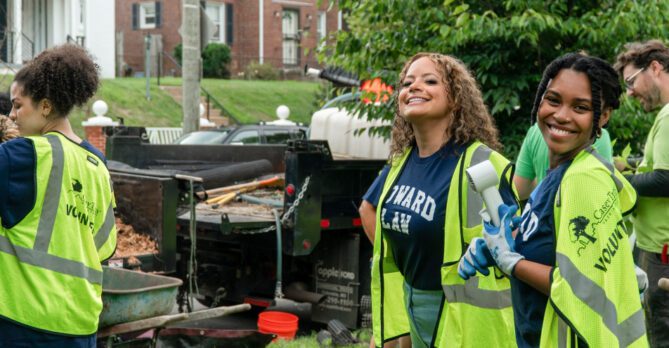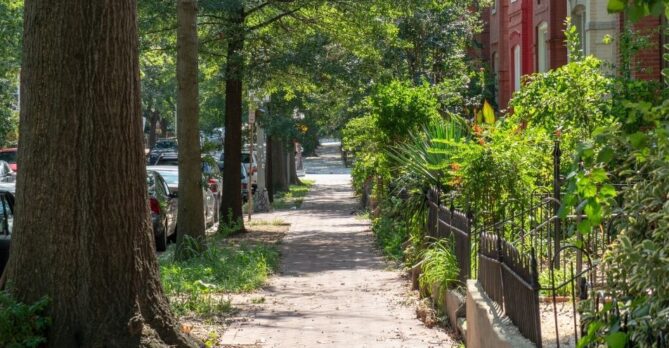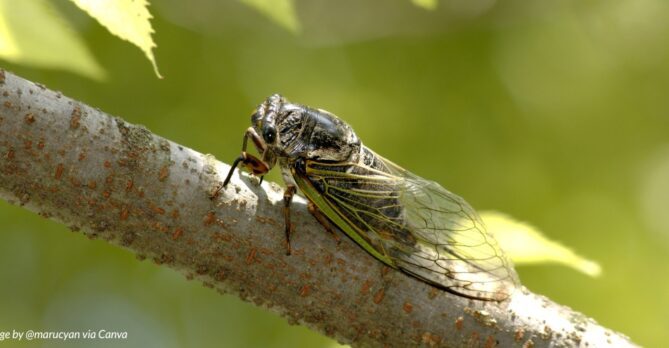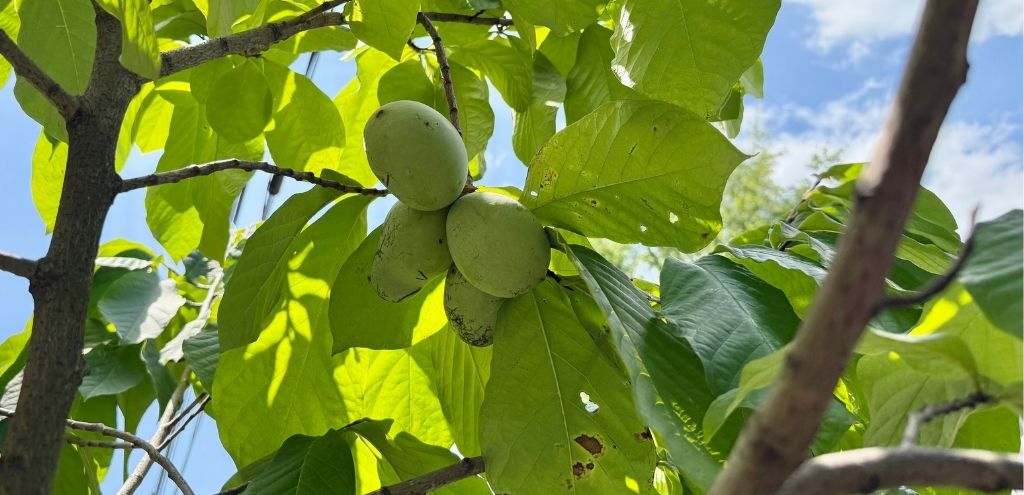
Prepare for pawpaw season in DC with some fun facts about this native “tropical” fruit.
For those who don’t already know, pawpaws are North America’s largest native fruit with a curious flavor that is described as a mix between a banana, mango, and pineapple. Pawpaws usually ripen and begin dropping around September through mid-October. You can already spot the unripe fruits on pawpaw trees, which grow in wooded areas near bodies of water.
The pawpaw, or Asimina triloba, is a smaller deciduous tree that thrives in moist soil by rivers and creeks under canopies of larger trees. Its roots – both historical and physical – span across the Mid-Atlantic to the Midwest and into the South, holding significant ties with multiple Native American tribes who consumed the fruit and used its branches and bark to create tools.
POLLINATION QUIRKS & FAMILY TIES

Botanically, pawpaws are a bit of a wonder. They are largely self-incompatible, meaning that they can’t pollinate themselves, and your pawpaw tree may need a hand in cross-pollinating to reap some fruit.
Their pollinators, also, are not your typical bees and butterflies – pawpaws are pollinated by flies and beetles, which are attracted to the decaying smell and dark maroon color of the tree’s flowers.
Strange, or maybe just different – you can decide.
Even more unique, pawpaws grow far away from the rest of their plant family. The pawpaw tree is the northernmost member of the Annonacceae, a distinctly tropical and sub-tropical plant family, and it is the only tree of its relatives to be native to temperate North America.
WARMER DAYS, EARLIER HARVESTS?
Typically, the pawpaw ripens around late summer and into early fall, which may leave you wondering why we’re already in pawpaw mode here at Casey Trees. As with other beloved DC trees like the cherry blossom, climate change is impacting the timing of the pawpaw’s flower and fruit production, with some farmers reporting pawpaws ripening weeks earlier than usual in some years.
While warming temperatures technically increase the range of suitable land for the pawpaw, its seeds still need cold temperatures to germinate successfully. Additionally, the extreme weather variability associated with climate change hurts the pawpaw at other stages of its growth. Drought, heavy rain, cold snaps, and more impact the pawpaw, potentially leading to earlier harvests with smaller, sour fruit.
Still, we must give the pawpaw credit where it’s due. Don’t let its short shelf life and easily bruised skin distract you from the plant’s hardiness, adaptability, and low-maintenance upkeep. There’s a reason it’s stuck around for so long, and why it’s loved by many!
LOOKING TO CELEBRATE PAWPAWS THIS SEASON? LOOK NO FURTHER.
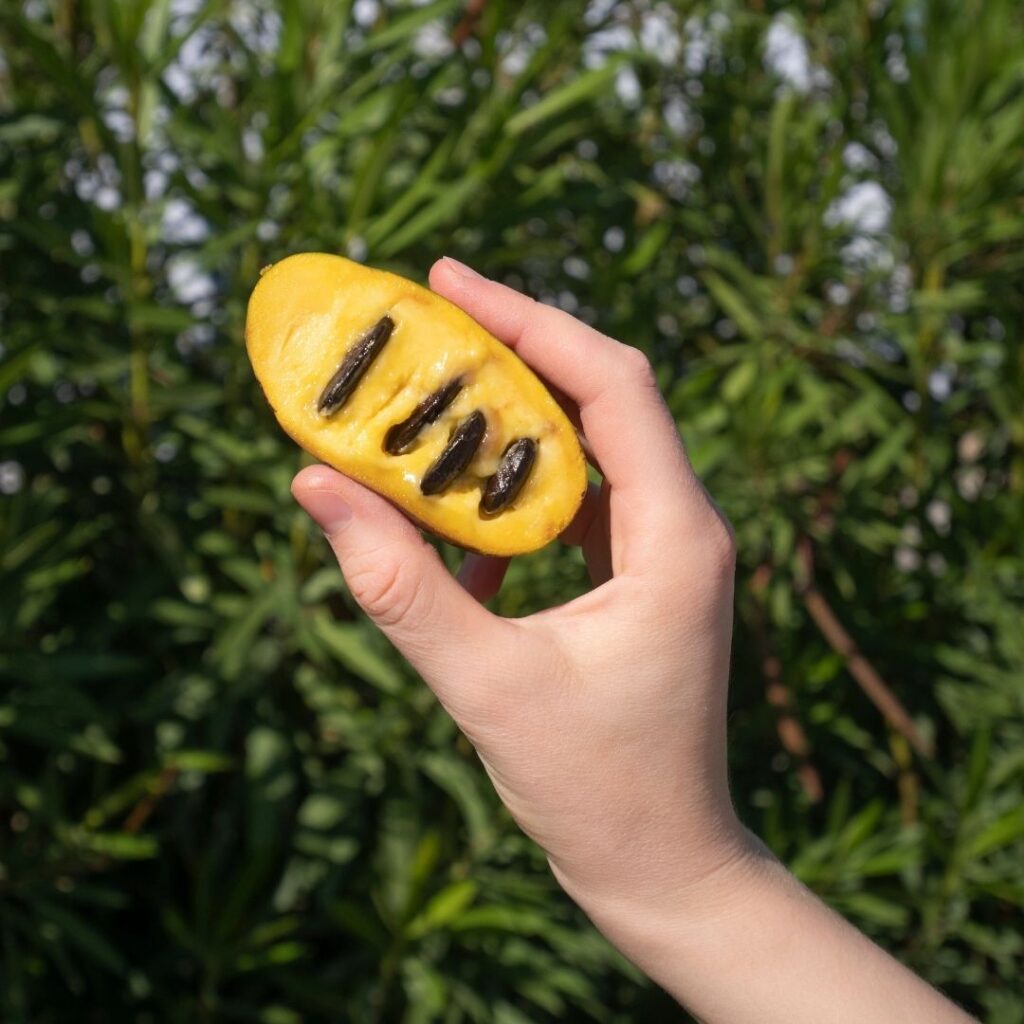
Before you dive headfirst into a pawpaw party, it’s important to make sure your fruit is ripe to enjoy its sweet flavor. Look for pawpaws that give off a fruity aroma, are more yellow or brown in color, and are soft to the touch – like an avocado or peach.
Keep an eye out at local farmers markets for the kidney-shaped fruit or look for pawpaw trees by bodies of water such as the C&O Canal, where visitors are permitted to pick a half gallon of pawpaws per person per day. If you do forage, just remember: Please refrain from foraging on private property, and make sure to check foraging laws wherever you go. Do not eat anything you can’t 100% identify, and be careful when eating pawpaws, as their skin and seeds can potentially be toxic for human consumption.
Itching to test your cooking skills? Get inspired by our pawpaw mead and muffins and practice your own pawpaw recipes.
Want to get your paws dirty and get some money for it? Homeowners can plant a pawpaw tree in their yard and receive a $50 rebate through our tree rebate program!
No matter your style, be sure to celebrate the pawpaws near you this upcoming season – and remember the importance of protecting them in the years to come.
